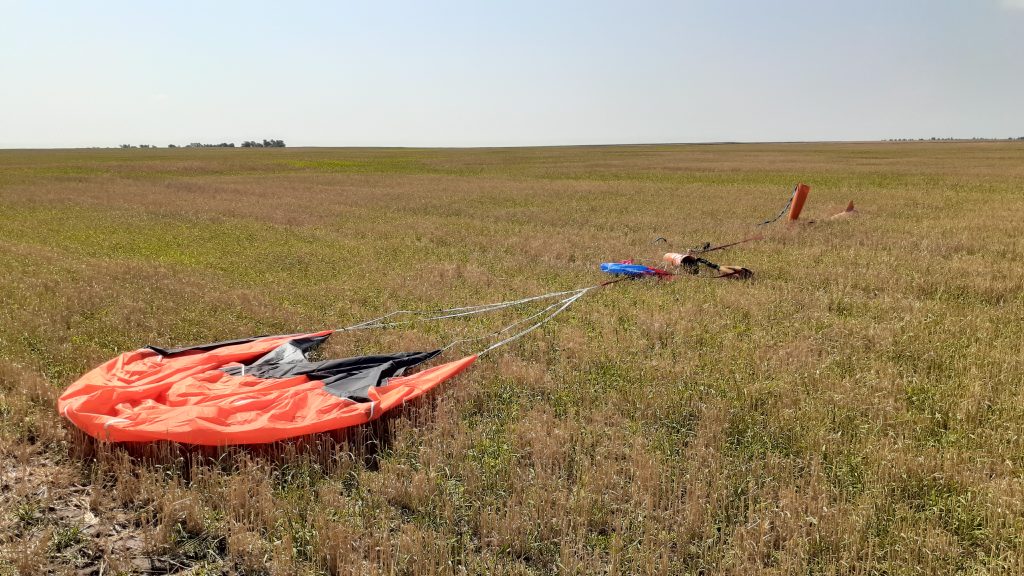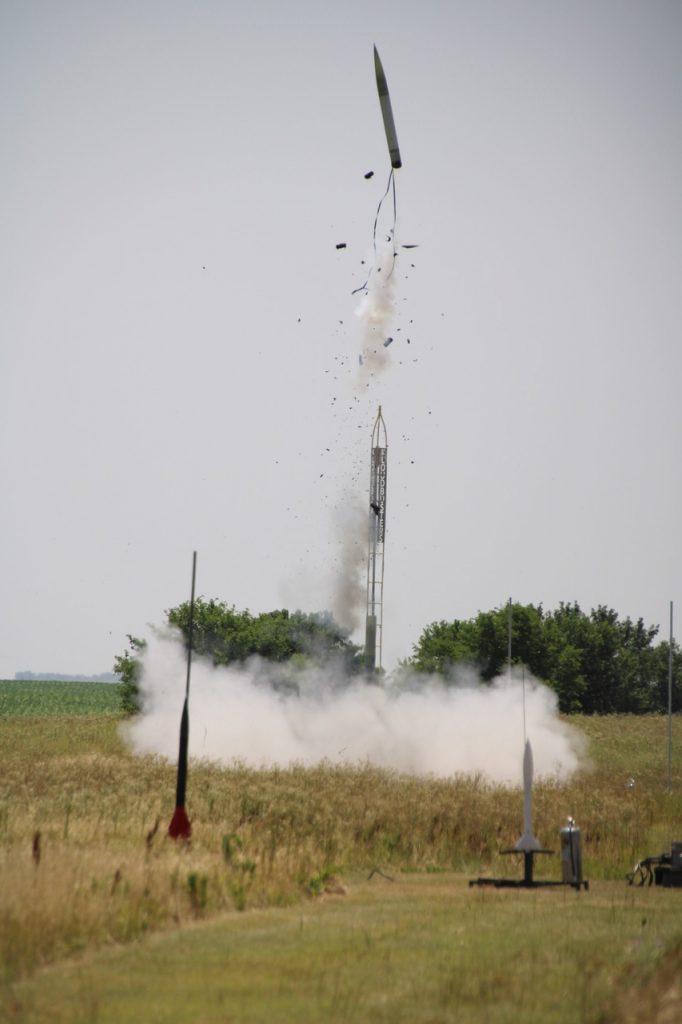Return to Flight
July 15, 2020
For the first time since February, we got to make the trip back up to Argonia, KS for the Kloudbuster’s July Fun Fly. We had 2 launches for Honeywell and the National Security Campus scheduled for the day, and despite the afternoon heat, it was amazing to get back out and fly rockets.
After getting up at 5AM, we set up our work area and began preparing the first rocket for flight. The preparation we do the week before the launch paid off again, as putting the whole thing together went smoothly as possible. We wore masks at the RSO table and out to the pads, but other than that, things were pretty normal. We got Go Pokes racked and launched on a CTI M3400, the 4th flight of this rocket that went without a hitch and was easily recovered nearby.



We got the second rocket prepped at this point, flying on another N5800 just like we did in August and November 2019. This motor used the warrantied casing to replace the one that bulged the 6G-XL casing from the November flight. It came with dinged threads which we straightened out with a mallet, the liner had a small chip at the top edge, and we had to omit the bottom-most grain spacer O-ring to get the nozzle to fit flush inside the liner. None of these would have prepared me to witness what came next. The Bigger One weighed 128 pounds and sat ready on the pad. When the igniter burned, the motor lit for about a half second before the rocket got blow apart, ejecting parts of the motor, including a flaming propellant grain onto the grass. After 4 years of high-power rocketry, I was responsible for my first CATO, and it had to happen with a $1300 reload on the 7th launch with our customer. I didn’t really feel that bad personally; I was more baffled by what could have possibly gone wrong to cause such a failure. Unfortunately when we collected the pieces, the image became even less clear. There were 2 unburned propellant grains on the ground. All of the motor hardware was intact. The forward closure and threaded retaining ring were blown clear, but both sets of threads contained almost no observable damage. It’s almost as though the grain which caused the overpressurization did so by unscrewing the retaining ring on its own.


We lost basically the entire rocket including the motor casing, some electronics, and our main parachute. Their payload was mostly intact, but they told us later is also sustained damage. Fortunately, the CATO didn’t hurt anyone, destroy any of the Kloudbuster’s ground support equipment, or start a fire on the dry grass of the Rocket Pasture. Things certainly could have been worse.
Even with the successful first flight of the day, I was pretty bummed. I’ve had relatively few failures in my 4 years in high-power rocketry, but this was by far the biggest and worst. I’m working with our motor vendor and Cesaroni to identify what the cause may have been, and most importantly, what I and future operators can do going forward to mitigate these kinds of failures. To have 2 straight issues with N5800 reloads is certainly a cause for concern.
Anyway, we will have to rebuild a new rocket to replace this one, and I’m pushing to make it even longer such that we can accommodate the new Aerotech O5280X that is the most powerful 98mm motor on the market.
They say you learn way more from your failures than your successes, so I hope there will be valuable information to glean from this CATO, as we will continue to fly thrusty, high L/D motors. Right now I just feel at a loss because it’s unclear what to fix for next time.








